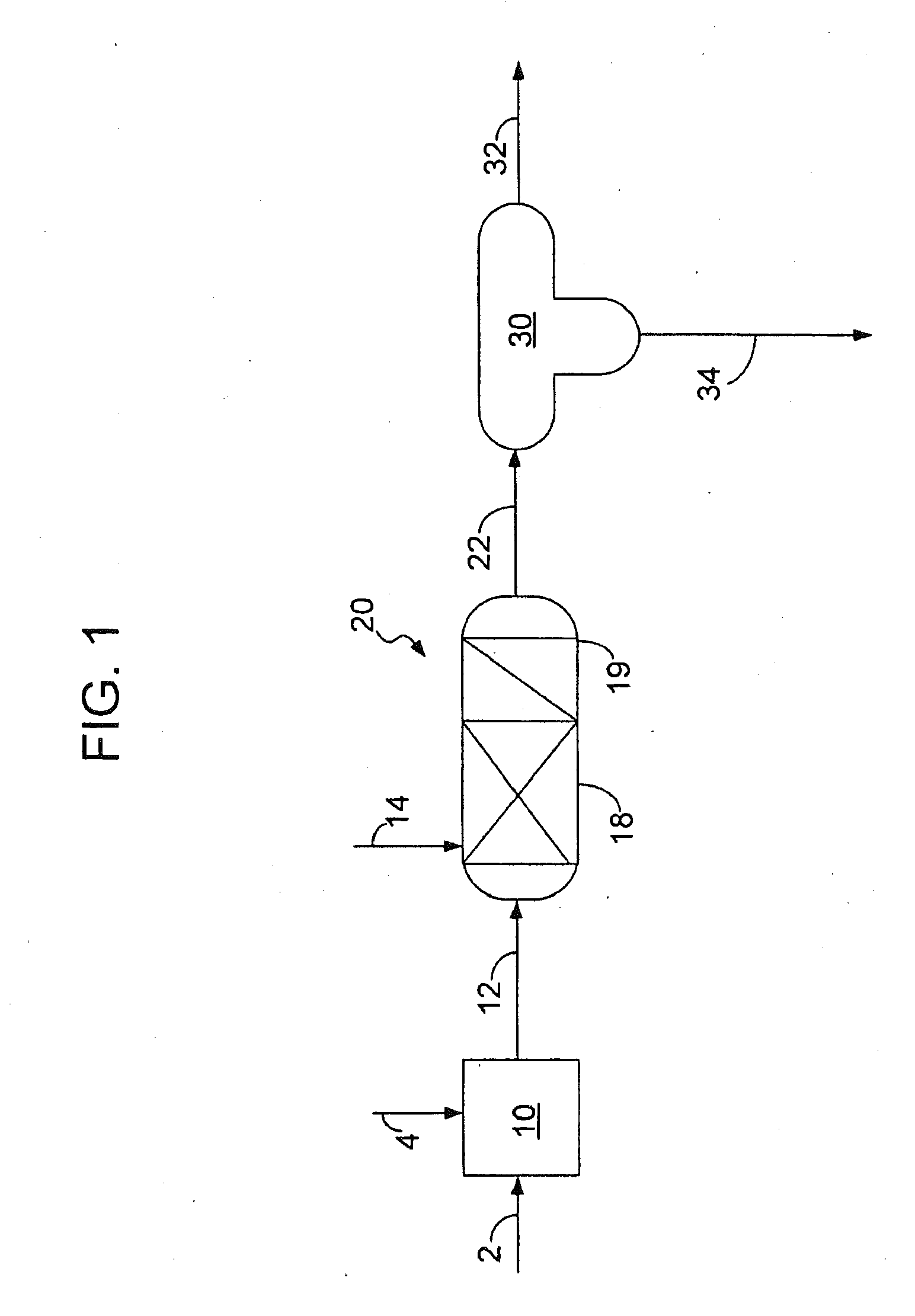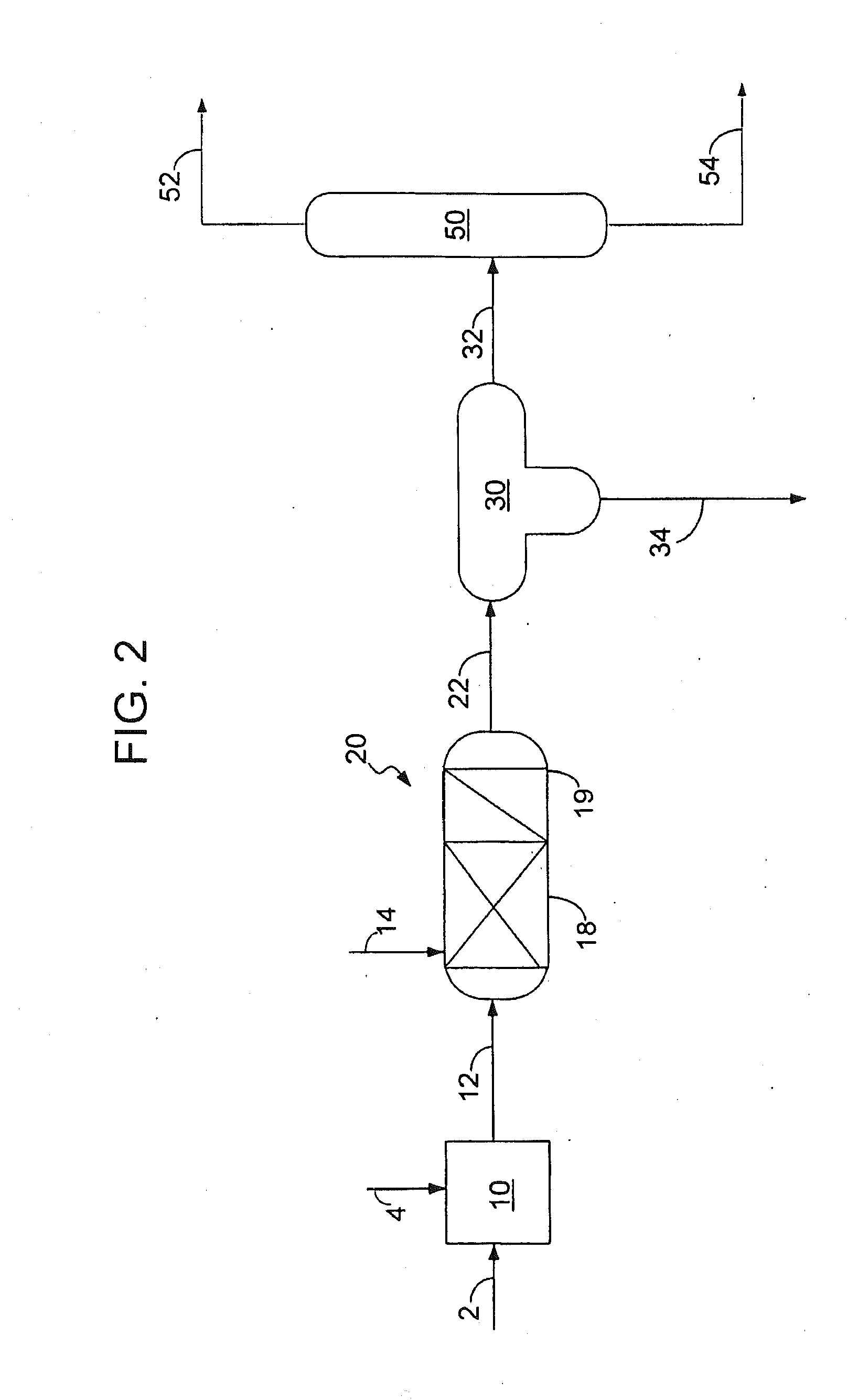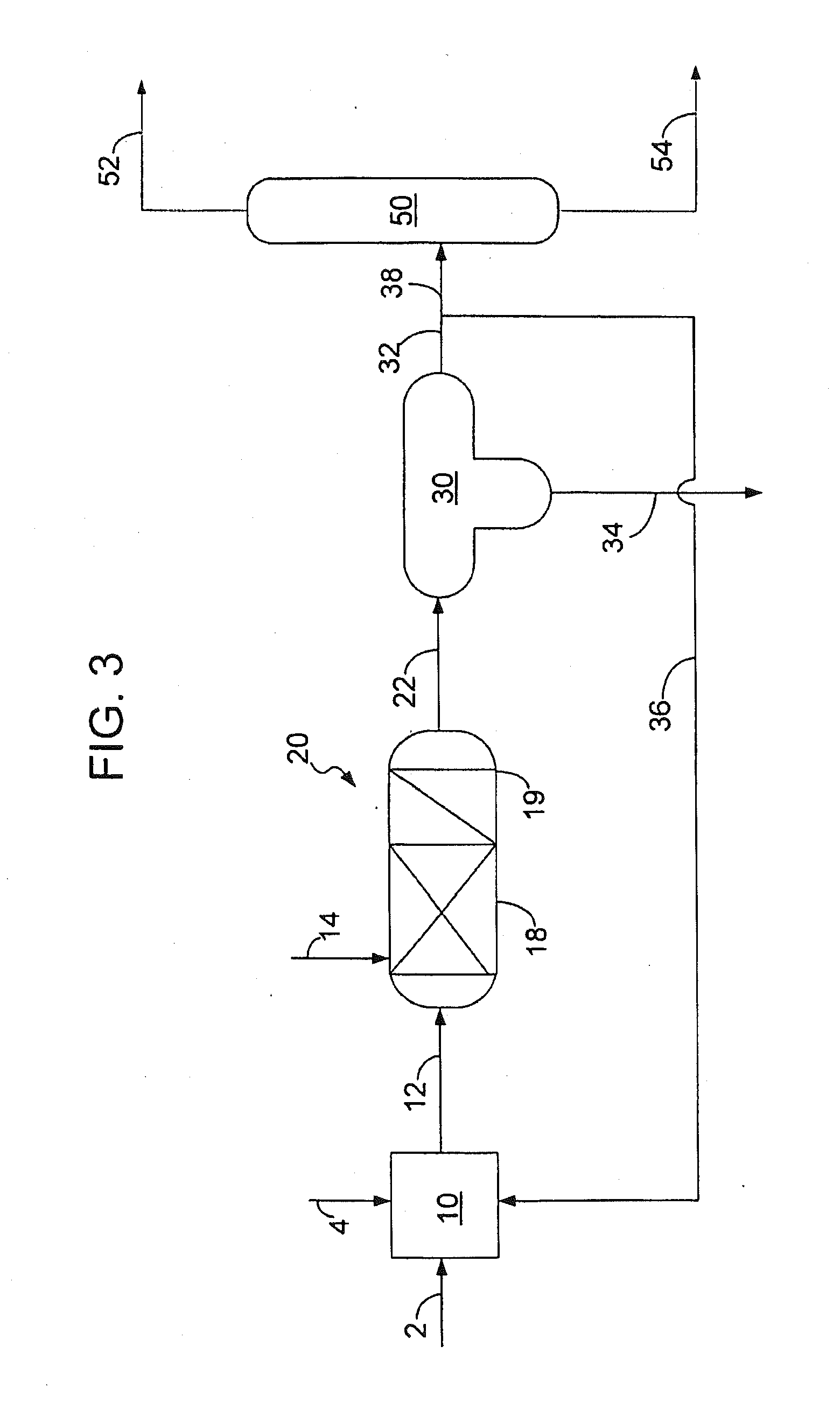Converting Heavy Sour Crude Oil/Emulsion to Lighter Crude Oil Using Cavitations and Filtration Based Systems
a technology of sour crude oil and filtration system, which is applied in the field of conversion of heavier sulfur-containing crude oil into lighter crude oil, can solve the problems of undesirable cracking, low hydrogen to carbon ratio of heavy crude oil, and difficulty in simply defining heavy crude oil in terms of individual molecular components, etc., and achieves the reduction of sulfur content and catalyst-sulfided particles, reducing sulfur content, and reducing sulfur conten
- Summary
- Abstract
- Description
- Claims
- Application Information
AI Technical Summary
Benefits of technology
Problems solved by technology
Method used
Image
Examples
Embodiment Construction
[0047]Embodiments of the present invention include processes of producing an upgraded crude oil from a sulfur containing crude oil. As the present invention is disclosed and described, it is to be understood that this invention is not limited to the particular combinations and methods disclosed herein. Accordingly, this disclosure is extended to equivalents of combinations and methods as would be recognized by one of ordinary skill in the arts. It should be understood that terminology employed herein is used for the purpose of describing particular embodiments only and is not intended to be limiting.
Definitions
[0048]As used herein, the terms “crude oil” or “hydrocarbon oil” are used to denote any carbonaceous liquid that is derived from petroleum. Included among these liquids are whole crude oil itself and petroleum residuum-based fuel oils including bunker fuels and residual oils.
[0049]Crude oil has a wide boiling ranges and sulfur content in different fractions. The present invent...
PUM
| Property | Measurement | Unit |
|---|---|---|
| frequency | aaaaa | aaaaa |
| temperature | aaaaa | aaaaa |
| residence time | aaaaa | aaaaa |
Abstract
Description
Claims
Application Information
 Login to View More
Login to View More - R&D
- Intellectual Property
- Life Sciences
- Materials
- Tech Scout
- Unparalleled Data Quality
- Higher Quality Content
- 60% Fewer Hallucinations
Browse by: Latest US Patents, China's latest patents, Technical Efficacy Thesaurus, Application Domain, Technology Topic, Popular Technical Reports.
© 2025 PatSnap. All rights reserved.Legal|Privacy policy|Modern Slavery Act Transparency Statement|Sitemap|About US| Contact US: help@patsnap.com



